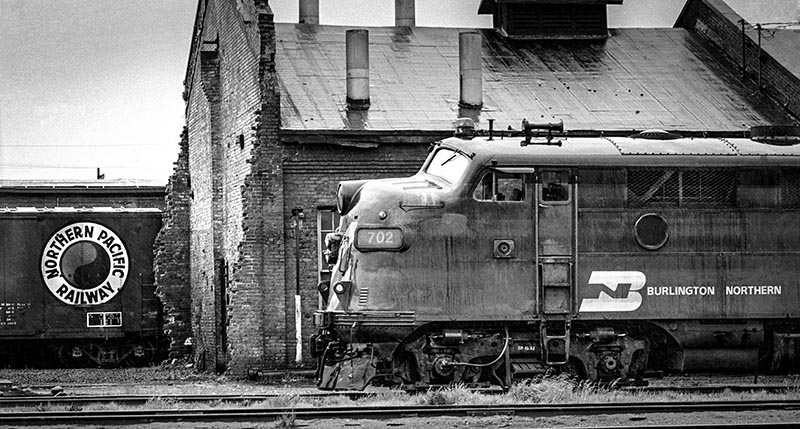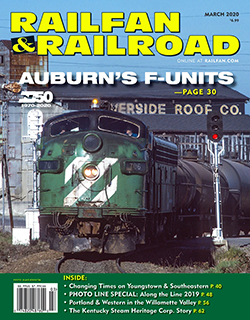 By Blair Kooistra/photos by the author
By Blair Kooistra/photos by the author
When I first started hanging out there as a teenaged railfan in late 1976, Auburn, Wash., and the Electro-Motive F-unit had already been closely associated for more than 30 years. Northern Pacific built its first diesel shop there in 1944 to service its 11 new 5,400-hp FT freight locomotives. Auburn was a vital terminal on NP, at the junction of the Seattle–Portland main line and the transcontinental route from the Twin Cities. The red brick and glass-block shop building, 230 feet in length, could perform everything short of a complete strip-down rebuild on a locomotive — engine, generator and heavy component change-outs, wheel truing, and running repairs were possible within the three-track building. It wasn’t long until NP’s growing fleet of EMD switch engines and Geeps working both Tacoma Division branches as well as the main line were also assigned there. F-units working west over the mountains were serviced there, along with second-generation EMD and General Electric diesels of the 1960s.
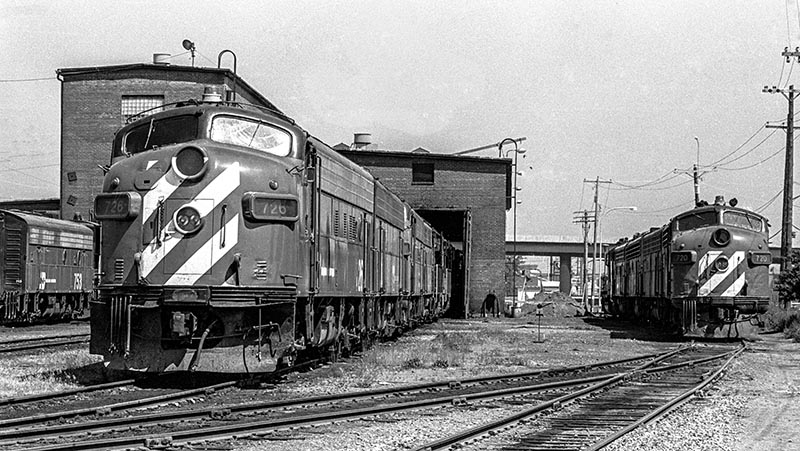
At least nine F-units were gathered at Auburn’s locomotive shop on June 2, 1978.
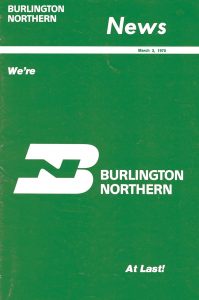 Things didn’t change that much right after the Burlington Northern merger was finally consummated in March 1970. For a locomotive design already obsolete for over a dozen years, nearly 15 percent of the new BN’s locomotive fleet were EMD F-units — 288 locomotives, according to the first Burlington Northern Motive Power Annual. The railroad made headway in modernizing its fleet in the following few years, relegating the F-units and early Geeps to local and secondary freight status. But efforts to eliminate these obsolete relics — along with the remaining Alco holdovers and early General Electric units — were slowed by a booming coal business that left the railroad short of motive power even as it added hundreds of new locomotives a year. BN even explored rebuilding rather than retiring several of the F-units, but quickly abandoned that effort.
Things didn’t change that much right after the Burlington Northern merger was finally consummated in March 1970. For a locomotive design already obsolete for over a dozen years, nearly 15 percent of the new BN’s locomotive fleet were EMD F-units — 288 locomotives, according to the first Burlington Northern Motive Power Annual. The railroad made headway in modernizing its fleet in the following few years, relegating the F-units and early Geeps to local and secondary freight status. But efforts to eliminate these obsolete relics — along with the remaining Alco holdovers and early General Electric units — were slowed by a booming coal business that left the railroad short of motive power even as it added hundreds of new locomotives a year. BN even explored rebuilding rather than retiring several of the F-units, but quickly abandoned that effort.
By 1976, Burlington Northern had reduced the F-unit fleet to 115 — still the largest cab unit fleet remaining in the U.S. — and distributed them about equally between terminals in the Twin Cities Region (at Northtown, Superior, and Dilworth, Minn., and Grand Forks, N.D.) and the Seattle/Portland Region (at Vancouver, Wash., Seattle, Spokane, and Auburn). Curiously, apart from the pioneer FTs, the BN merger found F-units assigned to Auburn for maintenance for the first time!
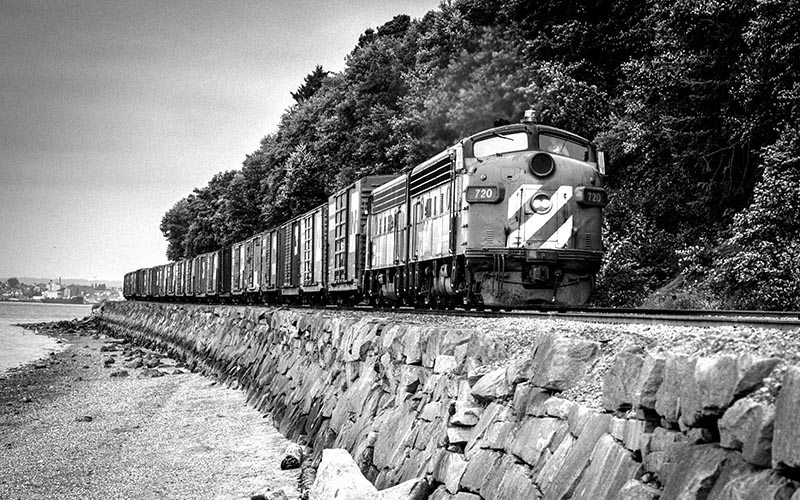
With time running out, F7s 720 and 708 roll south along the Puget Sound seawall entering Mukilteo, Wash., with a returning Auburn–Everett turn on July 18, 1981, just 11 days before the final F-unit operated on Burlington Northern’s Pacific Division.
Discovering Auburn
When I moved with family to Seattle in late 1976, the railfanning options were overwhelming — not only was The Milwaukee Road in my backyard, but BN still operated Alcos and F-units. I was a little late to the show to see these locomotives in their pre-merger colors (“Cascade Green?” the local fans harrumphed, still upset about the merger six years before) — but it all looked good to me. And no place was better to start a day photographing the railroad than Auburn, where sets of covered wagons, portholes glowing in the pre-dawn darkness and amber beacons flashing, beckoned down below as I turned off the highway just north of the roundhouse…


